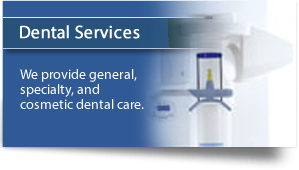Bone Grafting
Over a period of time, the jawbone associated with missing teeth atrophies or is reabsorbed. This often leaves a condition in which there is poor quality and quantity of bone suitable for placement of dental implants. In these situations, most patients are not candidates for placement of dental implants. Today, we have the ability to grow bone where needed. This not only gives us the opportunity to place implants of proper length and width, it also gives us a chance to restore functionality and esthetic appearance.
Bone grafting can repair implant sites with inadequate bone structure due to previous extractions, gum disease or injuries. The bone is obtained from a tissue bank. Special membranes may be utilized that dissolve under the gum, protect the bone graft, and encourage bone regeneration. This is called guided bone regeneration or guided tissue regeneration.
Bone Recontouring
Crown Lengthening
If you are unhappy with the appearance of short unsightly teeth this can be greatly improved by a combination of periodontal procedures and cosmetic dentistry. Although your teeth appear short, they may actually be the proper length. The teeth may be covered with too much gum tissue. We can correct this by performing the periodontal plastic surgery procedure, crown lengthening.
During this procedure, excess gum and bone tissue is reshaped to expose more of the natural tooth. This can be done to more than one tooth, to even your gum line, and to create a beautiful smile. Crown lengthening (or crown exposure) is required when your tooth needs to be restored and the edge of that restoration would be too far below the gum to be healthy for the gum or supporting bone. The procedure involves adjusting the levels of the gum tissue and bone around the tooth to create a new gum-to-tooth relationship. This allows us to place the edge of the restoration above where the gum attaches to the tooth. It should also provide enough tooth structure so the new restoration will not come loose in the future. This also helps to prevent decay and gum disease by allowing you to clean the edge of the restoration when you brush and floss. The procedure takes approximately one hour. Usually permanent restoration of the tooth is completed 45-60 days after the procedure so the position of the gum has time to heal and stabilize.

